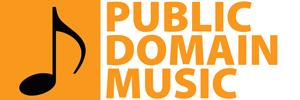Music has an incredible way of connecting us through shared experiences, and songs about being sick capture the universal struggles of physical, emotional, and mental challenges. From the depths of frustration and pain to the hope for healing and recovery, these songs resonate with listeners who have faced similar battles. Whether dealing with the heartbreak
Author: PD Music
We are a small group of musicians and educators with a mission is to make music education and instrument knowledge accessible to everyone.
26 Hopeful Songs About Resurrection to Inspire Your Journey
The theme of resurrection has long been a powerful source of inspiration in music, symbolizing hope, renewal, and the triumph over adversity. From spiritual rebirth to overcoming life’s challenges, songs about resurrection resonate deeply with listeners across various genres. Whether celebrating the resurrection of Jesus Christ or reflecting on personal transformations, these songs offer messages
28 Encouraging Songs About Surviving to Get You Through
Music has the unique power to inspire and uplift, especially during challenging times. Popular songs about surviving encapsulate the resilience, strength, and determination needed to overcome life’s obstacles. These anthems, spanning various genres from pop to rock to country, resonate deeply with listeners by offering messages of hope, empowerment, and perseverance. Whether dealing with personal
25 Calming Songs About Morning to Start Your Day
Morning is a time of renewal, hope, and tranquility, and music has a beautiful way of capturing these moments. From the gentle rays of the rising sun to the peaceful routines that start the day, songs about morning offer a diverse range of emotions and experiences. Whether reflecting on new beginnings, the serenity of dawn,
22 InFamous Songs About Stalking & Obsessed Fans (Must Hear)
Music often delves into the complexities of human emotions, and some of the most compelling songs address the darker aspects of relationships, including obsession and stalking. These songs provide a window into the unsettling world of intense fixation and the violation of personal boundaries, exploring themes of unrequited love, control, and the dangers of intrusive
28 Most Iconic Songs About Motorcycles Ever Written
Motorcycles have long been a symbol of freedom, adventure, and rebellion, capturing the imagination of musicians and listeners alike. From the roar of the engine to the thrill of the open road, motorcycles embody a sense of liberation and excitement that is reflected in many iconic songs across various genres. Whether it’s rock, metal, country,
23 Most Unique Songs About Gypsy and Their Lifestyle
The mystique and allure of the gypsy lifestyle have long captivated the imaginations of musicians and listeners alike. Gypsies, with their free-spirited, nomadic existence, symbolize a sense of adventure, freedom, and living beyond societal constraints. From rock anthems and folk ballads to pop hits and jazz melodies, songs about gypsies explore themes of independence, mystery,
27 Most Famous Songs About Kentucky (KY) of All Time
Kentucky, known for its rolling hills, vibrant bluegrass music, and rich cultural heritage, has inspired countless artists to celebrate its unique charm through song. From heartfelt ballads to lively bluegrass tunes, these songs capture the essence of the Bluegrass State, reflecting its scenic beauty, storied traditions, and the deep connections its residents feel to their
20 Mournful Songs About the Death of a Friend (Must Listen)
The loss of a friend is a profound and deeply personal experience, often leaving a void that is hard to fill. Music has the unique ability to capture and express the complex emotions associated with such a loss, providing comfort, solace, and a means of remembering those who have passed. Through poignant lyrics and emotive
20 Catchy Songs About Camping and the Outdoors
Camping is a beloved pastime that brings people closer to nature, offering a break from the hustle and bustle of everyday life. One of the most enjoyable aspects of camping is the music that accompanies these outdoor adventures, from songs sung around the campfire to tunes that capture the spirit of the great outdoors. Whether










